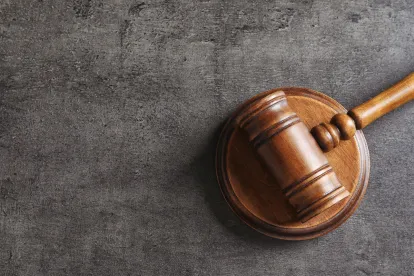The Second Circuit Court of Appeals recently applied a no-damages-for-delay provision to affirm the dismissal of a demolition contractor’s breach of contract claims. The project involved reconstructing and raising the Bayonne Bridge between Staten Island and New Jersey. The Port Authority awarded the general contract on the $1.29 billion project to the joint venture Skanska Koch Kiewit, Inc. Infrastructure Co. (JV). The JV hired NASDI, LLC as the demolition contractor. After its work on the project was delayed over 19 months, NASDI sought $7.5 million in additional compensation. After receiving only a fraction of the claim amount, NASDI sued the JV for breach of contract, quantum meruit, and breach of the covenant of good faith and fair dealing.
The trial court granted summary judgment dismissing all of NASDI’s claims. Specifically, the trial court held that the no-damages-for-delay clause in the contract barred the breach of contract claim. The Second Circuit affirmed. In doing so, the Second Circuit discussed two exceptions to the general rule that no-damages-for-delay clauses are enforceable in New York. The court’s discussion is excerpted below:
NASDI first takes issue with the district court’s grant of summary judgment on its breach of contract claim, which the district court held was barred by the subcontract’s no-damages-for-delay clause. Such clauses – which prevent a plaintiff from suing a defendant over delays that occur while performing on a contract – are generally valid and enforceable in New York. See Corinno Civetta Constr. Corp. v. City of New York., 67 N.Y.2d 297, 309 (1986). And while New York law recognizes several exceptions under which a plaintiff can sue a defendant for delay, plaintiffs face a “heavy burden” in seeking to invoke them. N. Star Contracting Corp. v. City of New York, 611 N.Y.S.2d 11, 12 (1st Dep’t 1994).2
NASDI contends that two of these exceptions apply here. First, it argues that the clause was unenforceable because the delays here – nineteen months in total3 – were “uncontemplated.” Corinno, 67 N.Y.2d at 309. But New York courts have recognized that lengthy delays are generally foreseeable – and thus not uncontemplated – in complex construction projects. See Manshul Constr. Corp. v. Bd. of Educ. of N.Y.C., 559 N.Y.S.2d 260, 261 (1st Dep’t 1990) (reasoning that the “nature of the work” rendered such delays foreseeable); Gottlieb Contracting, Inc. v. City of New York, 446 N.Y.S.2d 311, 312 (1st Dep’t 1982) (delays caused by “other prime contractors’ inaction” and “faulty performance” are “precisely within the contemplation of the exculpatory clauses”). Consequently, New York courts have enforced no-damages-for-delay clauses against claims for delays of twenty or even thirty-two months, including in the context of construction projects similar in scope to the Bayonne Bridge project here. See, e.g., Comm. Elec. Contractors, Inc. v. Pavarini Constr. Co., 856 N.Y.S.2d 46, 47 (1st Dep’t 2008) (enforcing no-damages-for-delay clause and granting summary judgment against claim premised on delay of twenty months in construction of museum); Dart Mech. Corp. v. City of New York, 891 N.Y.S.2d 76, 77 (2009) (same for delay of thirty-two months in project to build annex for sanitation department). Though NASDI cites to one decision that denied summary judgment on a claim premised on a two-and-a-half-year delay, that case involved a longer delay and behavior far more suspect than that at issue here. See Bovis Lend Lease LMB v. GCT Venture, 775 N.Y.S.2d 259, 260 (1st Dep’t 2004) (“[A]ppellants allegedly allowed tenant-requested design changes to continue unabated, thereby increasing the scope of the subcontractor’s work and preventing completion in a timely fashion.”). NASDI argues that several documents establish a genuine dispute as to the foreseeability of the delays, but those documents were either not timely presented to the district court or make obvious and generic points that construction had been delayed, which is not in dispute.
Second, NASDI argues that the no-damages-for-delay clause was unenforceable because the delays here were “so unreasonable that they constitute[d] an intentional abandonment of the [sub]contract” by SKK. Corinno, 67 N.Y.2d at 309. Again, we disagree. As already discussed, the length of the delays alone was insufficient to make them “unreasonable,” given that New York courts have upheld no-damages-for-delay clauses against delays of greater length in similar contexts. And while NASDI makes much of a five-page letter by a demolition professional, who opined that the changes and delays to NASDI’s work “amount[ed] to a cardinal change [i.e., abandonment] as recognized by the industry,” App’x at 1776, the letter was unsworn and its author stated in his deposition that he did not “claim to be an expert in anything,” Dist. Ct. Doc. No. 80-1 at 2; see also Capobianco v. City of New York, 422 F.3d 47, 55 (2d Cir. 2005) (“[U]nsworn letters … generally are inadmissible hearsay that are an insufficient basis for opposing a motion for summary judgment.”). Furthermore, the letter failed to support its baseline conclusion – that there was a “cardinal change as recognized in the industry” – with any analysis explaining industry expectations or how the bridge project might have run afoul of them. App’x at 1776; see Kulak v. City of New York, 88 F.3d 63, 71 (2d Cir. 1996) (“[C]onclusory statements, conjecture, or speculation by the party resisting the motion will not defeat summary judgment.”).
The Second Circuit also addressed NASDI’s claim for breach of the covenant of good faith and fair dealing. In that claim, NASDI asserted that the JV failed to act in good faith by allocating just $600,000 to NASDI from a lump sum settlement with the owner. The court disagreed, finding that the JV had provided a full account of its independent review and point-by-point rejection of NASDI’s $7.5 million claim. With no evidence that the JV’s calculations were incorrect or dishonest, the Second Circuit affirmed the trial court’s dismissal of the claim for breach of the covenant of good faith and fair dealing.
A full copy of the Second Circuit’s complete decision is available here.




 />i
/>i

